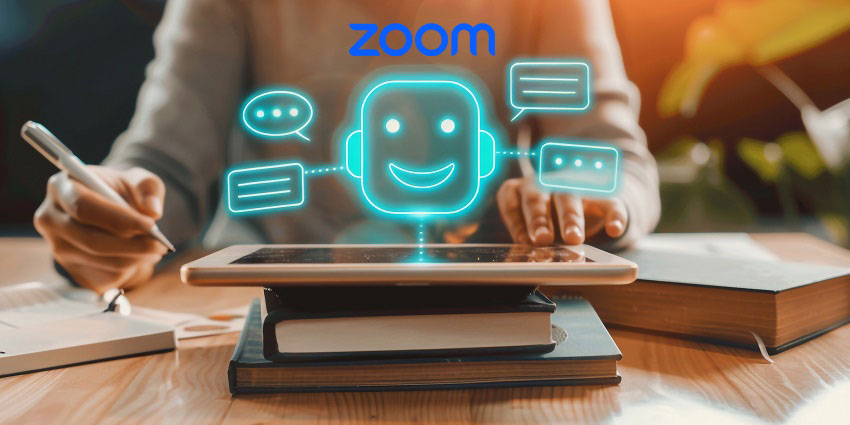There’s more to great collaboration and communication than simply keeping people connected through chat apps and meeting tools. Today, business leaders rely on the data and insights generated from day-to-day conversations to make crucial decisions about their future. The only way to reliably capture that information is through note-taking services.
In the past, options like Cisco Spark Meeting Notes might have been a great way to do that – at least for Cisco users. However, now, Cisco has announced that they will be altogether discontinuing the Meeting Notes service. Though there’s a chance that the solution will be rolled into the Webex Teams experience, no such announcement has been made so far.
In the wake of the Cisco Meeting Notes solution, I spoke to an alternative provider called Hugo. Hugo provides a connected meeting notes solution that integrates company meeting notes with the tools and applications teams use every day. CEO and co-founder, Josh Lowy, told me all about his thoughts regarding the loss of Cisco Meeting Notes, and how his team can help businesses that still need to access, share and action critical meeting information between teams.
Tell Us About Hugo

Josh Lowy and his co-founder created Hugo as a solution to help connect the way that people meet in an organisation, to the way that they work. Coming from a product management background, Lowy noticed how easy it was for information to get lost in many business environments. When teams are working across different locations and across different tools, like CRM systems, ticketing solutions, and even collaboration tools, access to the same decision-driving data becomes impossible.
Hugo helps to keep everyone in a business environment on the same page with a connected meeting notes solution. “With Hugo, you can centralise your meeting notes, and through integrations, connect that information to other essential people and tools in an organisation. You can send your notes to Slack for people who couldn’t attend your latest meeting or create Jira tickets for the product team based on new information from customers.”
According to Josh, Hugo supports companies in creating better customer satisfaction and employee productivity. Used in both external and internal interactions, Hugo pulls meeting data from different conversations into the same place to make workplaces more efficient.
“A lot of customers of ours have seen Spark Notes being neglected for some time now. They’ve come to us searching for a solution that they can no longer get from Cisco.”
“Hugo works with all the SaaS solutions that teams are already using, so they can focus on workflow gains without the risk of vendor lock-in”
What’s Your Response to Cisco Discontinuing Meeting Notes?
Lowy told me that at a strategic level, it looks as though Cisco is pouring more of their energy into competing with solutions like Microsoft Teams and Slack. They’re focusing on their instant chat, file-sharing, and conferencing solutions, and paying less attention to the process of collecting meeting information.
Interestingly, for the time being, Cisco hasn’t said that they’re going to migrate a Notes system into Webex Teams. This seems like a fairly brutal step forward for what many people consider to be a vital part of their meeting process. Note taking is crucial when it comes to making important business decisions, and there doesn’t seem to be a lot of logic in removing this feature entirely.
“We’re more than just an alternative to Cisco Meeting Notes. People have been concerned for a while about Cisco neglecting Meeting Notes, but they’ve also come to us for other reasons too. For instance, we play well with all of the tools that companies are already using, without constraining our customers to a single vendor. Interoperability underpins big part of our product philosophy”
Josh told me that customers already have a lot of great choices for meetings and file sharing today, but there seems to be a significant gap in the market for leveraging the data generated during meetings to unleash more effective teamwork. “You need this information to make crucial decisions. However, with trends like remote working and a growing range of tools used inside any one company, people are grappling with fragmentation on a tech and human level. We see customers struggle to centralise the information they gather every day to drive better decisions. That’s the problem that Hugo solves.”
A New Era of Interoperability
Hugo believes that the future of communication and collaboration depends on interoperability. Unfortunately, Cisco has long been more focused on trying to provide everything their customers need in a single stack, rather than collaborating with others to make sure that they can offer a wider range of solutions.
On the other hand, Hugo and Josh Lowy want to take a different approach. They believe that the only way to serve their customers these days is to work well with everyone. “We need to make sure that sales, customer support, and other teams can all share and action the same information. We’re taking a horizontal view and embracing the stack our customers are already using, rather than trying to lock them all into solutions from the same brand.”
According to Josh, the reality today is that companies are using a wide range of different tools to stay connected. For businesses to work efficiently, the tools they use need to work well together. “We’re dedicated to our partner approach with companies like Atlassian, BlueJeans & Slack.”
“We want customers to be able to use the solutions they like for communication and collaboration, without having to compromise on their meeting notes”
What’s more, Hugo doesn’t just make it easier to work with the people inside of an organisation too. Hugo’s wide range of integrations also makes it easier to connect information from meetings with third-party vendors, suppliers, and contractors too. “We’re seeing companies augment their capabilities with contractors more and more. We want our customers to be able to bring these critical ‘team mates’ into their workflow while also maintaining privacy, and that’s something that no one else does well at the moment.”







